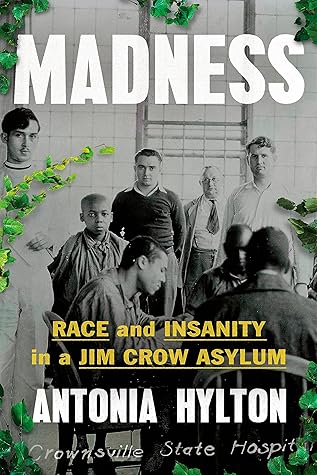More on this book
Community
Kindle Notes & Highlights
Read between
January 19 - January 24, 2025
“Drapetomania,” he asserted, was the irrational and unnatural desire of a slave seeking freedom. If slaves didn’t have white people to take care of them, they would regress. He believed that enslaved people who misbehaved and ran away from their owners would develop drapetomania, and that slave owners who treated the enslaved with too much kindness could trigger it.
It would be the first and only asylum in the state, and likely the nation, to force its patients to build their own hospital from the ground up. Black Marylanders would have to earn their access to healthcare through hard labor and a return to the antebellum social order.
Patient stays were extended to meet production needs. Patients at Crownsville were trapped in a cycle of free labor—one that began as a questionable form of therapy and frequently ended either in their exploitation by local companies seeking a cheap labor source, or in their peonage and service to the very hospital and state that was intended to earnestly facilitate their rehabilitation.
Patient records and monthly hospital reports from the 1950s and early ’60s, at least those found or made available to me and other researchers, suggest that Crownsville was better equipped for production and industrial maintenance than it was outfitted for therapy and treatment. By neglecting almost all personal and contextual information about their patients and doing little to preserve even a doctor’s account of clinical encounters, the hospital erased the patients’ humanity.
Over the years, Crownsville had developed into a dumping ground—a place that seemed to swallow the undesired, poor, and nonconforming Black residents of Maryland and, at times, deny them fundamental human rights.
But as her mother’s cells were transformed into billion-dollar drugs and vaccines, Elsie was at Crownsville. The evidence suggests she was used by science, too.
I believe that madness is part of all of us, all the time, that it comes and goes, waxes and wanes. —Otto Friedrich
Maryland and the nation’s prisons were beginning to experience the reverse effect: the population in Maryland prisons tripled in the late twentieth century, with a raw increase from 7,731 people incarcerated in 1979 to 24,186 in 2003. By the 1990s, the United States reached a rate of opening one new prison or jail every single week
Is it a coincidence that at the very historical moment when the asylum was being dismantled, the prison, which had collaborated and exchanged extensively with hospitals like Crownsville, rose to prominence? And how might the prison have relied materially and operationally on the asylum’s legacy?


